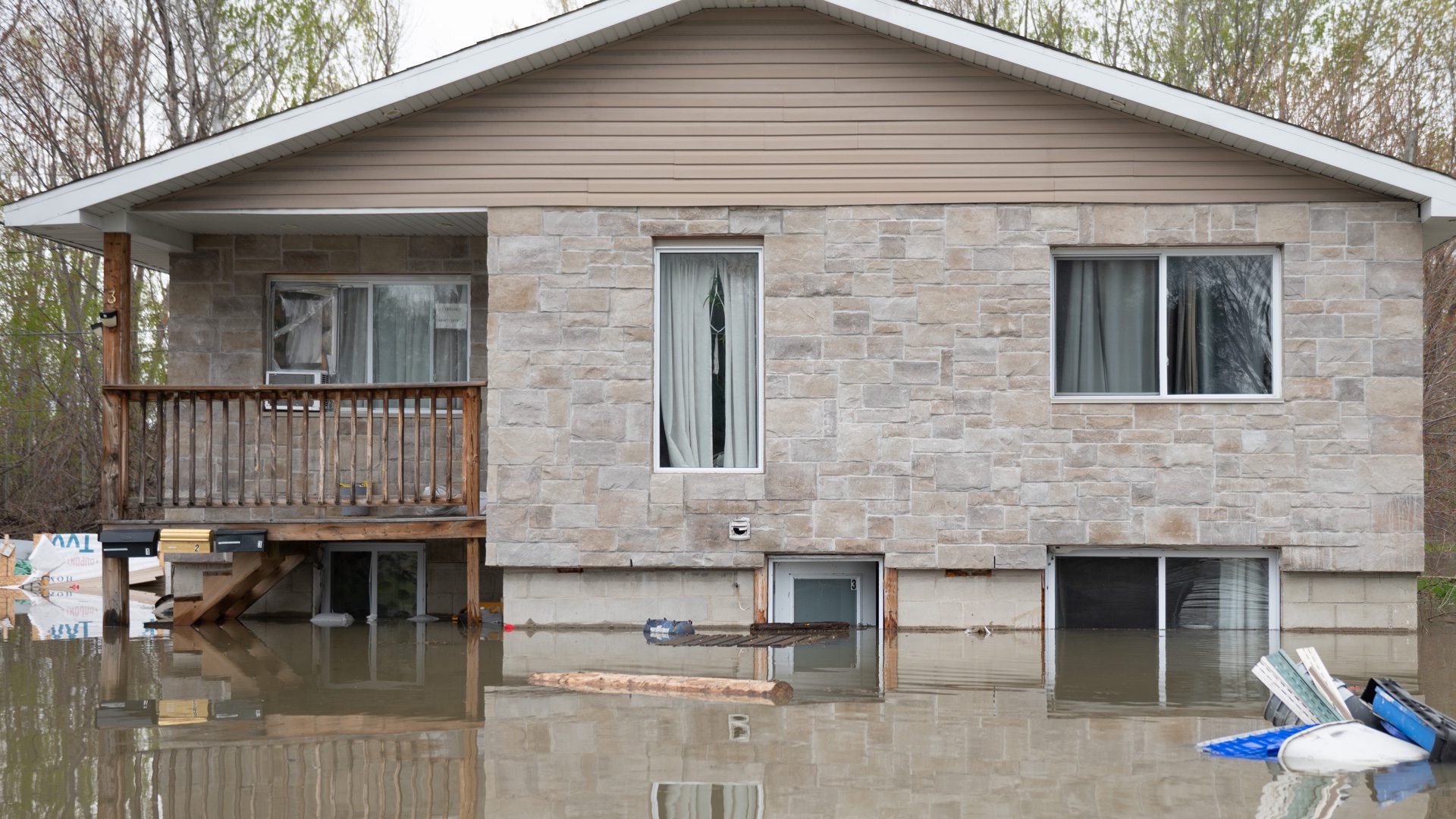
(Version française disponible ici)
COP28 and Canada’s role in helping mitigate climate change are rightly an intense focus of media and public attention, with 2023 being the hottest year on record, as well as widespread intense flooding, heat domes and wildfires across the globe.
Far less recognized are Canada’s significant and truly low-cost opportunities to achieve major domestic benefits from avoiding losses or major repairs through climate adaptation.
The cheapest and fastest gains in adaptation for homeowners and governments occur with greater flood protection. There are multiple easy steps that both should take to make this happen, such as homeowners fixing the grading around their houses so that water is directed away from the foundation, and governments ensuring that homes are not built on flood plains.
The largest financial expense of climate change in Canada is residential basement flooding. The already-high water damage costs are escalating. The average cost of a basement flood in Canada is $43,000.
Up to 10 per cent of homes (1.5 million residences) are not insurable for flooding because of existing flood risk in basements. Catastrophic flooding from 2010-20 decreased the selling prices of homes by an average of eight per cent in those locations.
Catastrophic insurable losses in Canada surged to an average of $2.1 billion per year from 2009-22 vs. $250 million to $450 million annually from 1994-2008. Catastrophic insurance claims from flooding in Canada are also “bending upward” as their rate of increase is accelerating. Today, for every $1 in loss covered by insurance, there are also $3 to $4 in damages for which there is no insurance coverage. This is called the insurance gap.
Generally, four factors contribute to flood risk: more severe precipitation events, aging municipal infrastructure, aging housing infrastructure and loss of natural infrastructures that function as sponges to absorb water, such as forests, fields and wetlands.
Governments and homeowners have crucial roles in reversing the incidence and expense of rising flood risks.
For the public sector, enhanced flood protection by investing in physical and natural infrastructure is productive and cost-effective at a time of increasing pressure on government budgets from higher program and debt interest costs, slowing revenue growth and numerous competing claims for more operational spending and capital investment.
These constraints make the efficiency and effectiveness of new public-sector outlays even more important. One dollar invested in adaptation brings $2-$10 in net benefits from avoided losses per decade as various studies by leading global and domestic organizations have shown.
In natural infrastructure, government efforts at the provincial and municipal levels should start with the principle of “first, do no harm.”
Building housing on wetlands, forests, fields and other flood-risk or flood-absorbing areas is both short-sighted and high cost. The expenses begin with much greater future costs to enhance physical infrastructure, remediate flood damage and ultimately relocate homeowners in the highest-risk areas.
The short-term appeal of more housing and property tax revenues from homes built on flood plains will almost certainly end in anguish for unsuspecting buyers and large-size repair bills for infrastructure rebuilds, remediation costs and homeowner relocation expenses for governments.
At least as important are the ecosystem and other losses of crucial natural habitats that absorb water, especially during severe rainfalls and other storms.
Accordingly, it is vital that governments value and measure natural assets and their ecosystems in keeping with the idea: “What gets measured, gets managed.”
For homeowners, improved flood protection is straightforward and critical. Cost-of-living pressures for many households are mounting given much higher mortgage, food and energy payments particularly in late 2023 versus just two years ago and especially relative to the pre-pandemic era.
With less discretionary income and reduced financial resilience, many families can ill-afford large, unexpected expenses such as flood damage. Flood protection by homeowners is crucial to reduce this financial risk.
The merits of residential flood protection are not restricted to homeowners. For example, in the Toronto area, 500,000 tenants live in basement apartments. Many of them would not be able to pay for a hotel or other accommodation if a flood put them on the street.
Enhanced flood protection is also consistent with Canada’s national adaptation strategy. Among its targets is that “by 2025, 50 per cent of Canadians have taken concrete actions to better prepare for and respond to climate change risks facing their household.”
The typical homeowner can implement home flood protection over a long weekend, with no special expertise, and generally for less than a few hundred dollars.
When homeowners receive the free infographic “Three Steps to Cost-Effective Home Flood Protection,” 70 per cent of them report taking two actions to protect their homes within six months that they would not otherwise have taken.
Canada’s flood-risk management needs stronger leadership
Canada’s climate adaptation deficit
Time to get serious about mitigating disaster risk
Risks of climate change call for innovation and decisive policy
The evidence is clear. Homeowners will act to protect their homes from flooding when they know what to do. The reason they are not acting is because they have no direction.
Fortunately, the Canadian government can build upon notable flood-protection education initiatives already underway.
Various national organizations have made substantial efforts to inform and educate homeowners about ways to lower their flood risk exposure.
At the municipal level, more than 20 Canadian cities are sharing flood-protection guidance with homeowners.
In the financial sector, BMO and Meridian are helping guide homeowners to reduce flood risk.
Yet, as 2023 sadly demonstrated, Canada’s approach to flood protection and too many other events involving severe weather has been largely reactive and too often “management by disaster.”
Canada needs to transition to a culture of preparedness and resilience. Disseminating the detailed guidance that exists to limit risk due to flooding should be a priority and a leading component of implementing climate adaptation.










